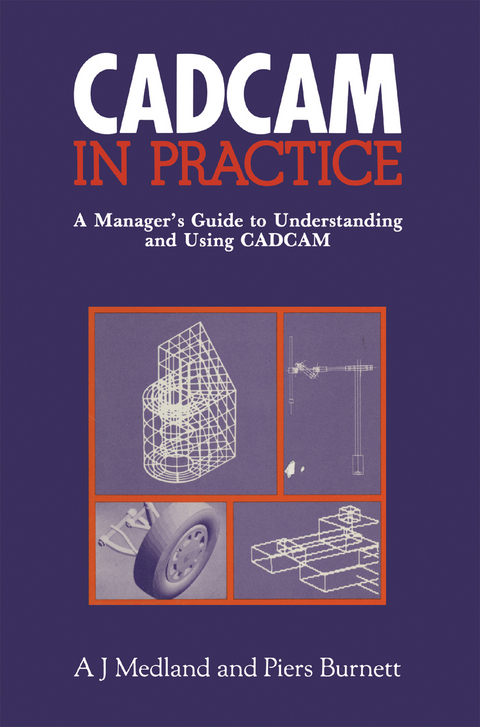
CAD/CAM in Practice
Springer (Verlag)
978-94-011-7122-9 (ISBN)
1: CAD — What is it All About?.- Concepts and descriptions.- The design process.- The origins of CAD.- Automated drafting: creating a model.- Representations and simulations.- Analytical programs: simulating performance.- Summary: CAD defined.- 2: CAM — An Introduction.- Design and manufacture: two processes or one?.- Numerical control: the basis of CAM.- Computer-assisted part programming.- Direct numerical control.- Computer numerical control.- The future of numerical control.- Flexible manufacturing systems.- Computer-integrated manufacturing.- Group technology.- Summary: from CAD/CAM to CADAM.- 3: The Elements of a CAD System.- From mainframe to mini.- Enter the micro — distributing ‘intelligence’.- Memory and storage devices.- Machine communicates with man: the graphics display.- Stroke-writing display systems.- Raster display systems.- Man communicates with machine: menus and input arrangements.- Light pen input.- Cursor steering input devices.- Graphics tablet input.- Choosing an input system.- Plotters and other hard copy devices.- 4: Principal Types of CAD System.- Two-dimensional modellers.- Wire-frame modellers.- Surface modellers.- Solid modelling I: boundary representation.- Solid modelling II: constructive solid geometry.- Summary: making a choice of modelling system.- 5: The Software — What CAD Can Do.- Basic drafting.- Macros.- Parametrics.- Graphic conventions.- ‘Drafting’ with primitive solids.- Transformations.- Taking things apart — sectioning.- Putting things together — segmentation and assembly.- Moving things about — simulated operations.- Automatic dimensioning.- Testing things — analytical programs.- 6: A Look Ahead.- Towards standardization?.- Horses for courses: tailor-made CAD.- Extending CAM — computer-aidedeverything.- Building-in more knowledge — expert systems.- Trends (and limitations) in hardware development.- New roles for CAD.- Near relations: computer graphics and simulators.- 7: Justifying CAD/CAM.- The fallacy of productivity.- Not-so-simple arithmetic.- Saving waste — consistency of information.- Saving time — availability of information.- Saving trouble — analysis of information.- Doing what could not be done before.- 8: Identifying the Needs of a Company.- Who should conduct the feasibility study?.- Geometrical information — the vital commodity.- Where does the information originate?.- How is information stored, communicated and used?.- The place of CAD/CAM in the information structure.- Setting identifiable goals.- 9: Choosing a System and Persuading the Company to Buy It.- ‘Turnkey’ systems.- Assembled systems.- Sources of information.- The politics of CAD.- Making a shortlist.- Benchmarking.- The ‘best’ system?.- Ready, get set....- 10: Buying and Installing a System.- Implementation: the role of the CAD manager.- Planning the installation: physical factors.- Planning the installation: psychological and organizational factors.- Selling CAD to the users.- Training.- The first six months.- Appendix I: Glossary of terms and acronyms used in CAD/CAM.- Appendix II: Checklist for potential purchasers of CAD systems.- Appendix III: Suppliers of turnkey CAD systems in the UK and USA.- Select bibliography.
| Zusatzinfo | 228 p. |
|---|---|
| Verlagsort | Dordrecht |
| Sprache | englisch |
| Maße | 155 x 235 mm |
| Themenwelt | Schulbuch / Wörterbuch |
| Geisteswissenschaften | |
| Informatik ► Weitere Themen ► CAD-Programme | |
| Naturwissenschaften | |
| Sozialwissenschaften | |
| ISBN-10 | 94-011-7122-X / 940117122X |
| ISBN-13 | 978-94-011-7122-9 / 9789401171229 |
| Zustand | Neuware |
| Haben Sie eine Frage zum Produkt? |
aus dem Bereich


